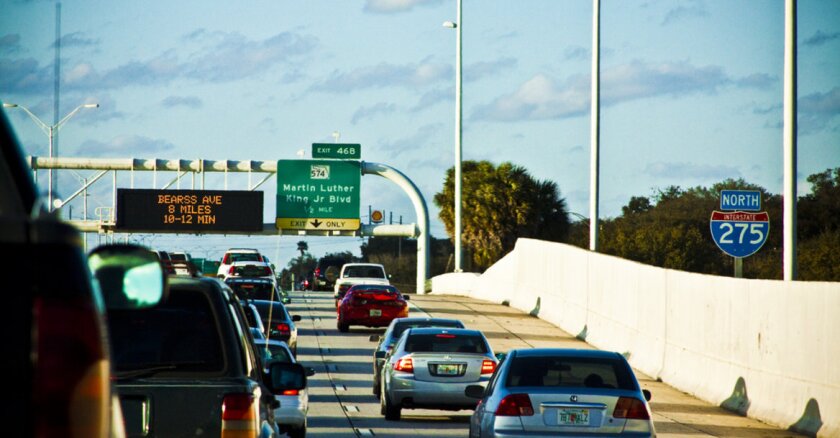Drivers in Florida could be offered incentives to change their driving behavior and better manage traffic flow, as part of a smart highway efficiency initiative.
This feature could be one part of a larger connected vehicle project by the Tampa Hillsborough Expressway Authority (THEA). The entity, in partnership with the University of South Florida’s Center for Urban Transportation Research (USF CUTR), has been awarded a $4 million grant by the U.S. Department of Energy to develop and deploy the Smart Eco-Driving Connectivity for Urban Roadway Efficiency (SECURE V2X) platform as a plan to reduce congestion on the Selmon Expressway.
The project will build on previous THEA connected vehicle initiatives to use driver data collected from vehicles, mobile devices and roadside units. It should generate detailed data analytics to inform how the transportation system is performing, while also creating alerts and other messages for drivers, said Greg Slater, THEA executive director and CEO.
The first phase of the project, which will run for about a year, will begin around March or April and will include data analytics, aided by CUTR research efforts. During this period, incident data and information from sources like INRIX, mobile devices and roadside units is expected to offer a rich and layered picture of the expressway system.
“We want a really, really detailed view of the operation and congestion that we’re seeing on the system,” Slater said. The data, he added, should start to answer lingering questions such as, is the congestion related to incidents occurring on the roadways, or to traffic volume?
“Being able to understand where friction is happening on the system and what’s causing the congestion, not only on the system, but the surrounding system,” he said. “It’s really about reducing the friction, and getting the system to operate more efficiently.”
A second phase will involve pushing messages out to drivers, based on learnings from the data analytics. A third phase will aim to score drivers on how well they are using the transportation network, which could lead to discounts on tolling rates.
Other opportunities for the program include using the connected vehicle technology to better manage maintenance projects on the system. Officials would also like to use the data from the expressway to inform traffic signaling on surface streets and, Slater said, potentially harness a technology such as artificial intelligence to do predictive analysis on traffic friction and re-time signals.
Traffic congestion in Tampa rose 6 percent in 2024, according to the INRIX Global Traffic Scorecard; it is the 25th most congested metropolitan area in the country.
Other cities have also explored a range of traffic congestion measures. Transportation officials in Austin, Texas — the 22nd most congested metro in the U.S. — are designing programs to lure commuters out of their cars and onto bikes, scooters, buses or a carpool.
“Mode shift incentives can be everything from free bus passes and bike share passes to actual cash or transportation wallets for folks to use on whatever mode they may choose,” Jack Flagler, a spokesperson for the Austin Department of Transportation and Public Works, said in an email in August regarding the initiative. Traffic congestion in Austin increased 3 percent in 2024, according to the INRIX scorecard.
Tampa officials have some experience with using incentives to affect behavior. The THEA connected vehicle program dates back to a 2015 pilot which equipped 1,100 vehicles with after-market onboard connected vehicle equipment. In exchange, those drivers were given a discount on their toll rates. Since then, the program — and automotive technology — have evolved, and a number of vehicles are now equipped with connected vehicle technology by their manufacturers. The THEA program has largely evolved toward increasing and improving communications with drivers.
Since its launch, the pilot has identified 14 wrong-way vehicles, enabling the system to send warnings to other drivers, Slater said.
“To me, those crashes are almost always fatal,” he said. “And so being able to warn people, and push that information to not only vehicles and drivers, but directly into the traffic management center, or directly into law enforcement, is just tremendous for us.”
Some information shared could also alert drivers to pedestrians in a crosswalk they cannot yet see, or about speed warnings on an upcoming curve.
“Those are the kinds of things we’re pushing out to our consumer base,” Slater said, “so that they can anticipate the condition, and really adjust appropriately.”
Connected Vehicle Tech Helps Tampa Tackle Traffic Congestion
The Tampa Hillsborough Expressway Authority is expanding its connected vehicle program on the Selmon Expressway to push more messaging to drivers, change behavior and possibly reward better driving with cheaper toll rates.









